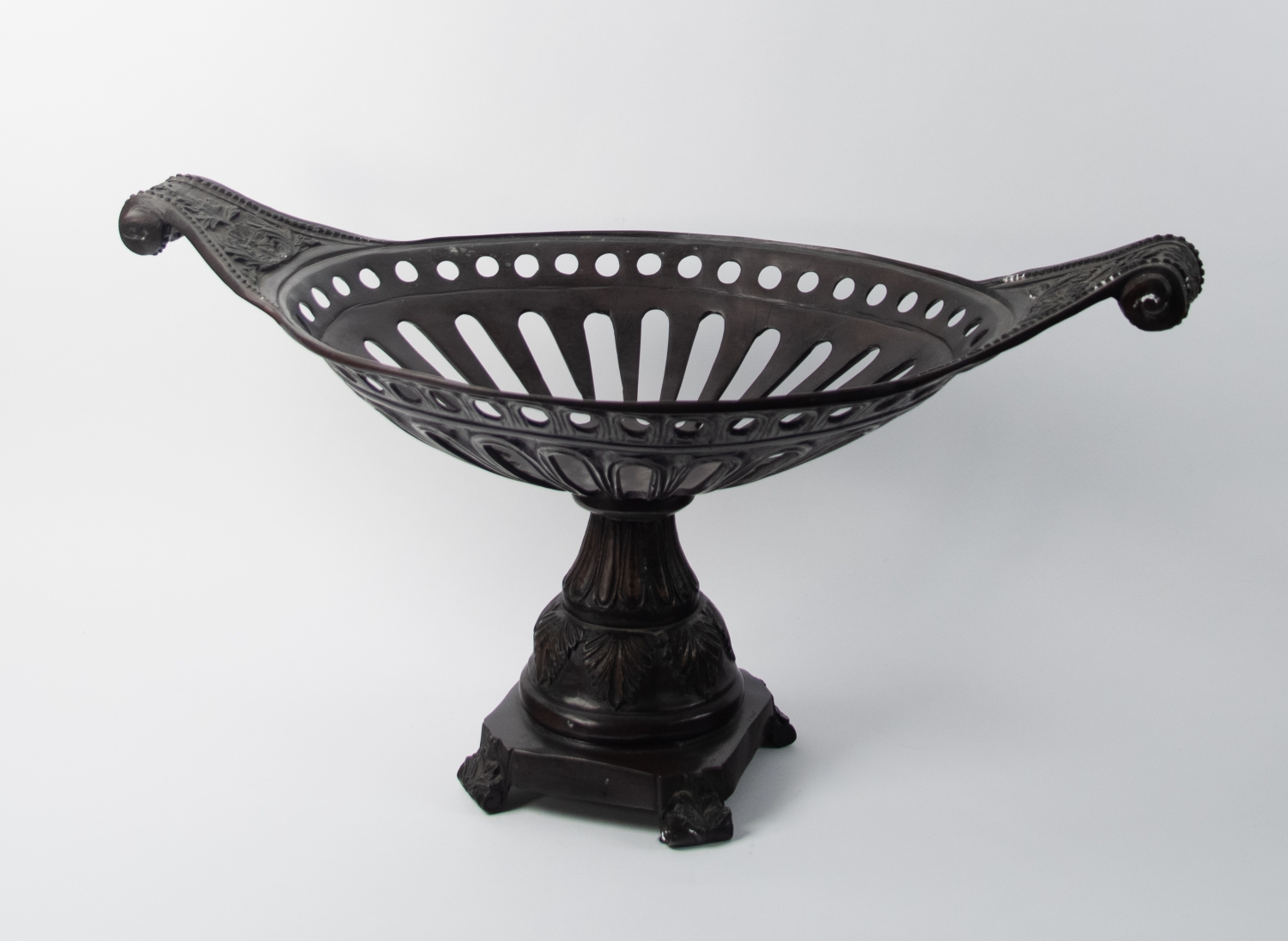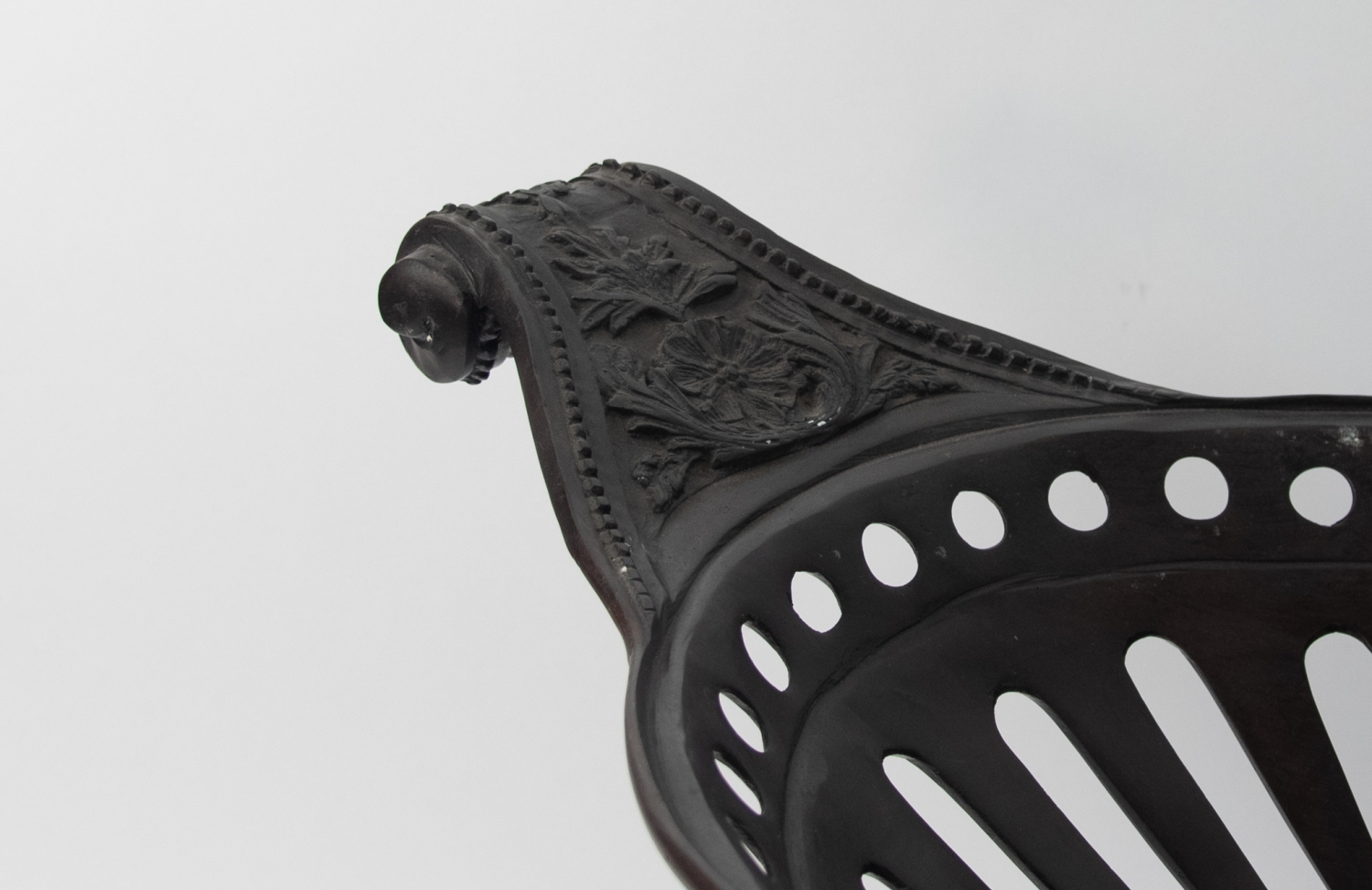Bronze Renaissance Bowl
The use of bronze became popular in 15th century Europe as a means to bridge ornament in sculpture with a faster rate of production. Artists employed the lost-wax method where wax models of sculpture would be encased by a mold wherein molten bronze would be poured over the wax model and once set the wax would be melted out, leaving a bronze production of the sculpture. With reusable molds and the availability and durability of bronze this method allowed artists to reproduce sculpture and objects like this serving bowl at a faster rate and higher quantity for a flourishing Europe. The floral ornament and elegantly scrolled handles of this functional piece would have achieved the merging of art and life sought during this era.







